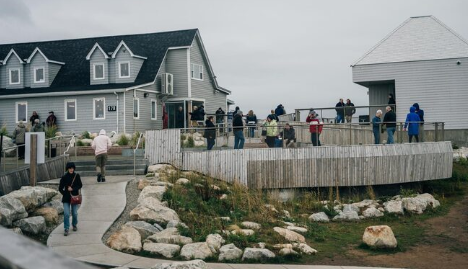The Evolution of Pakistani Wedding Traditions Over Time
Weddings are significant milestones in a person’s life, and the traditions and customs surrounding these celebrations can provide a window into the cultural fabric of a community. In Pakistan, wedding ceremonies are rich with history, symbolism, and meaning. Over the years, the Pakistani wedding ceremony has evolved, reflecting changes in society, modernization, and the blending of diverse regional and cultural influences. From the formalities of traditional rituals to the contemporary trends we see today, the evolution of Pakistani wedding traditions tells a fascinating story.
The Early Roots of Pakistani Wedding Ceremonies
Pakistani wedding traditions have deep historical roots, stemming from the cultures and civilizations that have shaped the region over millennia. The Indus Valley Civilization, one of the oldest in the world, contributed significantly to the cultural heritage of Pakistan. Wedding rituals in early times were influenced by a variety of factors, including religious practices, regional traditions, and family customs.
Before the partition of India in 1947, wedding ceremonies in the region were often simple affairs, with families playing a central role. Marriages were often arranged by families, and the ceremonies were centered around the couple’s union within the larger social structure, rather than individual desires. Traditional weddings were often marked by modest celebrations, with an emphasis on the spiritual and familial bonds being formed.
Do you want to visit Char Dham? Char Dham Travel Agent is the best place to plan your Char Dham tour. You can book the tour from here.
The ceremonies would typically consist of a simple exchange of vows, prayers, and blessings from elders, followed by a feast. The attire for weddings was often heavily influenced by regional dress, with women wearing vibrant sarees and men wearing traditional kurtas.
The Influence of Islam on Pakistani Wedding Ceremonies
When Islam arrived in the Indian subcontinent during the 7th century, it brought with it new customs and rituals that would later influence the structure of wedding ceremonies. The Islamic practice of marriage, known as Nikah, played a key role in shaping Pakistani wedding traditions.
A Nikah is the formal union of two individuals under Islamic law. The ritual involves the signing of a marriage contract (Nikah Nama) in the presence of witnesses and the offering of a Mahr, a mandatory gift from the groom to the bride. The Nikah ceremony itself is relatively simple but holds profound significance, as it marks the official union of the couple under religious law.
Would you like to visit Indiar? A tour operator in India is the best place to plan your tour. You can book a tour from here.
Islamic weddings are often followed by a grand celebration that may include various pre-wedding and post-wedding events. These include the Mehndi (henna ceremony), Dholki (a musical pre-wedding event), and the Walima (a reception hosted by the groom’s family).
The Rise of Multi-Day Wedding Celebrations
As time passed, weddings in Pakistan became more elaborate and multi-faceted, stretching over several days to accommodate the various rituals and celebrations. The most significant of these is the Mehndi ceremony, which marks the beginning of the wedding festivities. Traditionally, the Mehndi is a joyful and colorful affair, with close friends and family gathering to apply henna to the bride’s hands and feet. Dholki songs and dances are an integral part of the event, with the bride and groom’s families showcasing their joy and excitement through music and performance.
The evolution of wedding ceremonies also saw the rise of the Nikah and Valima becoming two distinct and separate events. In the past, these events were often combined into a single occasion, but as the wedding industry grew in Pakistan, families began to separate them into two separate days to allow for larger, more extravagant celebrations.
Would you like to visit Haridwar? Travel agents in Haridwar are the best place to plan your trip. You can book your tour right here.
The Influence of Western Culture
As Pakistan modernized and globalized, the influence of Western culture began to make its way into Pakistani wedding ceremonies. This shift became especially pronounced after the 1980s, as exposure to international wedding trends, through television, magazines, and travel, introduced new ideas to the traditional structure of Pakistani weddings.
One of the most notable changes was the introduction of the lavish wedding reception, often modeled after Western-style banquets. These receptions would typically include an elaborate spread of food, live entertainment, and professional photography, mirroring the opulence and glamour of Western weddings. The décor also evolved, with many couples opting for luxurious floral arrangements, imported table settings, and elegant lighting.
Western wedding dresses also began to make their way into Pakistani ceremonies. While brides would still wear traditional attire like the Lehenga or Sharara, more brides began to embrace Western-style white wedding gowns. The fusion of Western and Eastern elements in the wedding attire symbolizes the blending of modernity with tradition.
Modern Trends in Pakistani Weddings
In recent years, Pakistani weddings have become increasingly commercialized and influenced by the global wedding industry. As wedding planners, decorators, and photographers have gained prominence, weddings in Pakistan have become highly stylized affairs. Today’s weddings in Pakistan are often described as grand events, where no expense is spared in making the day as memorable and visually stunning as possible.
Celebrity Weddings: One significant shift in recent years is the influence of celebrity weddings. Pakistani celebrities, both in the entertainment and political spheres, have begun to host lavish weddings that often become national events. These high-profile weddings set trends for the masses, influencing everything from wedding attire to décor and even the way ceremonies are structured.
Wedding Locations: Modern couples are increasingly opting for unique wedding venues. From luxurious hotels to outdoor garden venues and even destination weddings abroad, the location of the wedding has become a crucial element of planning. The trend of destination weddings, particularly to cities like Dubai or Istanbul, has also taken root among the elite.
Wedding Décor: One of the most visually dramatic changes in Pakistani weddings is the rise of extravagant décor. While traditional weddings relied on simple floral arrangements, modern weddings feature luxurious backdrops, chandeliers, and innovative lighting designs. Many couples now invest in wedding planners who specialize in creating unique, themed experiences that enhance the atmosphere of their big day.
Technology in Weddings: As in other parts of the world, technology has become an integral part of weddings in Pakistan. From live streaming wedding ceremonies for family members unable to attend, to the use of drones for aerial wedding photos, technology has elevated the wedding experience. Social media platforms like Instagram have also influenced the way couples plan and share their weddings, with many opting for trendy hashtags and Instagram-worthy moments.
Preserving Tradition Amid Modernization
While modern trends have undoubtedly shaped the way weddings are celebrated in Pakistan, there is still a deep respect for the traditional elements of a Pakistani wedding ceremony. Despite the changes in the way weddings are celebrated, the essence of the ceremony remains rooted in cultural and religious values.
The Nikah remains central to the wedding, and many families continue to emphasize the importance of traditional customs, such as the Mahr, the blessings of elders, and the exchange of vows. The Mehndi ceremony, too, retains its cultural significance as a time for family and friends to come together in celebration.
Moreover, many couples today seek a balance between honoring their cultural traditions and embracing modern trends. For example, while brides may wear Western-style gowns for their receptions, they often choose traditional attire for their Nikah ceremony, and the grooms may opt for classic sherwanis instead of tuxedos.
Conclusion
The evolution of Pakistani wedding traditions is a reflection of the country’s dynamic social, cultural, and economic changes. From simple, intimate ceremonies to extravagant multi-day celebrations, the Pakistani wedding ceremony has undergone a remarkable transformation. However, at the heart of every wedding remains the same core values: love, commitment, family, and faith. As Pakistan continues to modernize, it will be fascinating to see how wedding traditions evolve further, while still holding onto the rich heritage that has shaped them over time.






